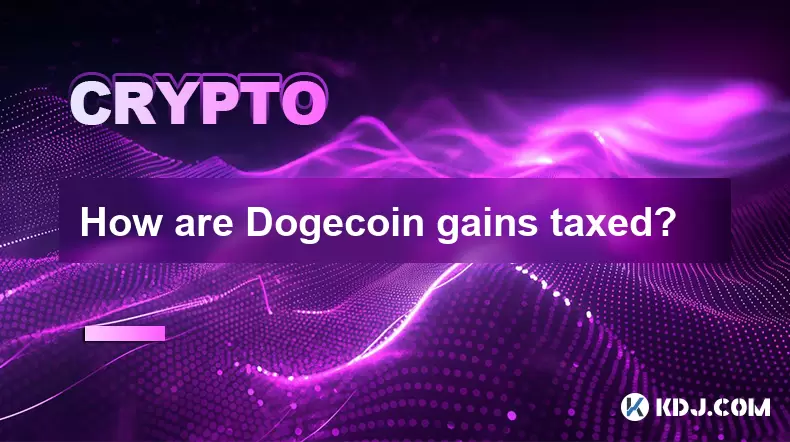-
 bitcoin
bitcoin $109667.069529 USD
-3.03% -
 ethereum
ethereum $3936.685804 USD
-4.07% -
 tether
tether $1.000493 USD
0.01% -
 xrp
xrp $2.771823 USD
-4.74% -
 bnb
bnb $957.805027 USD
-5.34% -
 solana
solana $196.735100 USD
-6.68% -
 usd-coin
usd-coin $0.999727 USD
-0.01% -
 dogecoin
dogecoin $0.227355 USD
-5.12% -
 tron
tron $0.335205 USD
-0.81% -
 cardano
cardano $0.779256 USD
-3.59% -
 ethena-usde
ethena-usde $0.999900 USD
-0.06% -
 hyperliquid
hyperliquid $42.492095 USD
-6.61% -
 chainlink
chainlink $20.501853 USD
-4.34% -
 avalanche
avalanche $28.952606 USD
-11.21% -
 stellar
stellar $0.356038 USD
-3.93%
What is the relationship between Bitcoincoin and Litecoin?
Litecoin and Dogecoin, both early altcoins using Scrypt, differ in origin, development, and community focus, yet remain relevant in the evolving crypto landscape.
Jul 06, 2025 at 06:01 am

Origins and Development Background
Dogecoin (DOGE) and Litecoin (LTC) are both cryptocurrencies that emerged in the early years of blockchain technology's mainstream adoption. Litecoin was created by Charlie Lee in 2011 as a fork of Bitcoin's source code, aiming to improve upon Bitcoin’s transaction speed and scalability. Dogecoin, on the other hand, was launched in 2013 by Jackson Palmer and Billy Markus as a parody cryptocurrency based on the Doge meme. Despite their differing origins — one serious, the other humorous — both have found significant communities and real-world usage.
Technological Similarities and Differences
Both Dogecoin and Litecoin utilize the Scrypt hashing algorithm for mining, which differentiates them from Bitcoin’s SHA-256 algorithm. This choice allows for more accessible mining using consumer-grade hardware like GPUs. However, while Litecoin has undergone several upgrades to enhance its network efficiency and privacy features, Dogecoin has largely retained its original codebase with minimal modifications. The block generation time also differs: Litecoin targets a 2.5-minute block time, whereas Dogecoin operates at a faster pace of approximately 1 minute per block.
Market Positioning and Use Cases
In terms of market capitalization and trading volume, Litecoin has consistently held a stronger position compared to Dogecoin, often ranking within the top 20 cryptocurrencies. Dogecoin gained widespread attention due to social media trends and celebrity endorsements, especially from figures like Elon Musk. While Litecoin was initially envisioned as 'digital silver' complementing Bitcoin’s 'digital gold', Dogecoin has evolved into a community-driven token used for tipping, charitable donations, and even funding sports teams or space missions.
Community and Ecosystem Support
The communities surrounding both coins play crucial roles in their development and adoption. Litecoin benefits from institutional support and integration into various financial platforms, including payment processors and exchanges. In contrast, Dogecoin thrives on grassroots enthusiasm and internet culture, with frequent viral campaigns boosting its visibility. Both projects maintain active developer groups, though Litecoin’s development is more structured and enterprise-oriented, while Dogecoin’s updates tend to be reactive and community-led.
Mining Dynamics and Supply Models
Mining dynamics between the two vary significantly. Litecoin has a capped supply of 84 million coins, designed to prevent inflationary pressures over time. Conversely, Dogecoin originally had an unlimited supply but transitioned to a capped model in 2022, limiting annual issuance to 2.1 billion new coins. This change aimed to stabilize its value and attract more serious investors. Miners interested in either coin must consider profitability factors such as hash rate difficulty, energy costs, and current market prices when deciding where to allocate resources.
Frequently Asked Questions
Why do people compare Dogecoin and Litecoin?
People often compare Dogecoin and Litecoin because they share similar technical foundations, including the use of the Scrypt algorithm. Additionally, both were among the earliest altcoins and have maintained relevance despite newer competitors entering the market. Their contrasting development philosophies and community cultures make them interesting subjects for analysis.
Can Dogecoin ever surpass Litecoin in market value?
While anything is possible in the volatile crypto market, Litecoin currently holds a structural advantage in terms of adoption, utility, and institutional backing. Dogecoin relies heavily on social sentiment and speculative trading, making it less predictable. Long-term valuation depends on numerous external factors, including regulatory changes and macroeconomic conditions.
Are there any collaborations between Dogecoin and Litecoin developers?
There have been no official collaborations between the core development teams of Dogecoin and Litecoin. However, Charlie Lee has occasionally commented on Dogecoin’s popularity and potential improvements, showing some level of mutual awareness. Given their shared history and similar codebases, informal discussions may occur within developer circles, but no formal partnerships exist.
How does the public perception of Dogecoin differ from Litecoin?
Public perception of Dogecoin is largely influenced by memes, social media hype, and celebrity mentions, creating a fun and sometimes unpredictable image. In contrast, Litecoin is viewed as a more serious and technically sound cryptocurrency, often discussed in the context of payments and blockchain innovation. These differing perceptions affect how each coin is treated by investors, regulators, and the broader tech community.
Disclaimer:info@kdj.com
The information provided is not trading advice. kdj.com does not assume any responsibility for any investments made based on the information provided in this article. Cryptocurrencies are highly volatile and it is highly recommended that you invest with caution after thorough research!
If you believe that the content used on this website infringes your copyright, please contact us immediately (info@kdj.com) and we will delete it promptly.
- Big Rocking Horse, Coin, and Ice Cream: An Aussie Icon's Sweet Ride
- 2025-09-26 10:45:16
- Pi Network, Price Forecast, and the Meme Market: A New York Minute
- 2025-09-26 10:25:14
- AIXA Miner: Revolutionizing Bitcoin Mining with Cloud Solutions
- 2025-09-26 10:45:16
- Mid-Cap Altcoins: Crypto Buys with Breakout Potential
- 2025-09-26 10:50:01
- BullZilla Presale: Riding the Crypto Wave in September 2025
- 2025-09-26 10:50:01
- Litecoin ETF Buzz, XRP Breakout Dreams, and BlockDAG's Deployment: Crypto's Wild West in '25
- 2025-09-26 10:50:01
Related knowledge

Bitcoincoin burning mechanism
Jul 20,2025 at 09:21pm
What is the Dogecoin burning mechanism?The Dogecoin burning mechanism refers to the process of permanently removing DOGE tokens from circulation by se...

How to earn free Bitcoincoin?
Jul 19,2025 at 10:08pm
What is Dogecoin and Why Earn It?Dogecoin (DOGE) started as a meme-based cryptocurrency in 2013 but has grown into a widely recognized digital asset. ...

Is Coinbase a good wallet for Bitcoincoin?
Jul 19,2025 at 04:42pm
Understanding Coinbase as a Wallet Option for DogecoinWhen considering where to store Dogecoin, Coinbase is often mentioned as a potential option due ...

How to buy Bitcoincoin with PayPal?
Jul 23,2025 at 06:57am
Understanding the Basics of Buying DogecoinBefore diving into the process of buying Dogecoin with PayPal, it’s essential to understand what Dogecoin i...

Best app to buy Dogecoin
Jul 23,2025 at 03:08pm
What Is a Cryptocurrency Exchange and How Does It Work?A cryptocurrency exchange is a digital marketplace where users can buy, sell, or trade cryptocu...

How are Dogecoin gains taxed?
Jul 25,2025 at 07:01am
Understanding the Taxation of Dogecoin GainsWhen it comes to Dogecoin (DOGE), many investors are drawn to its meme-inspired branding and volatile pric...

Bitcoincoin burning mechanism
Jul 20,2025 at 09:21pm
What is the Dogecoin burning mechanism?The Dogecoin burning mechanism refers to the process of permanently removing DOGE tokens from circulation by se...

How to earn free Bitcoincoin?
Jul 19,2025 at 10:08pm
What is Dogecoin and Why Earn It?Dogecoin (DOGE) started as a meme-based cryptocurrency in 2013 but has grown into a widely recognized digital asset. ...

Is Coinbase a good wallet for Bitcoincoin?
Jul 19,2025 at 04:42pm
Understanding Coinbase as a Wallet Option for DogecoinWhen considering where to store Dogecoin, Coinbase is often mentioned as a potential option due ...

How to buy Bitcoincoin with PayPal?
Jul 23,2025 at 06:57am
Understanding the Basics of Buying DogecoinBefore diving into the process of buying Dogecoin with PayPal, it’s essential to understand what Dogecoin i...

Best app to buy Dogecoin
Jul 23,2025 at 03:08pm
What Is a Cryptocurrency Exchange and How Does It Work?A cryptocurrency exchange is a digital marketplace where users can buy, sell, or trade cryptocu...

How are Dogecoin gains taxed?
Jul 25,2025 at 07:01am
Understanding the Taxation of Dogecoin GainsWhen it comes to Dogecoin (DOGE), many investors are drawn to its meme-inspired branding and volatile pric...
See all articles










































































